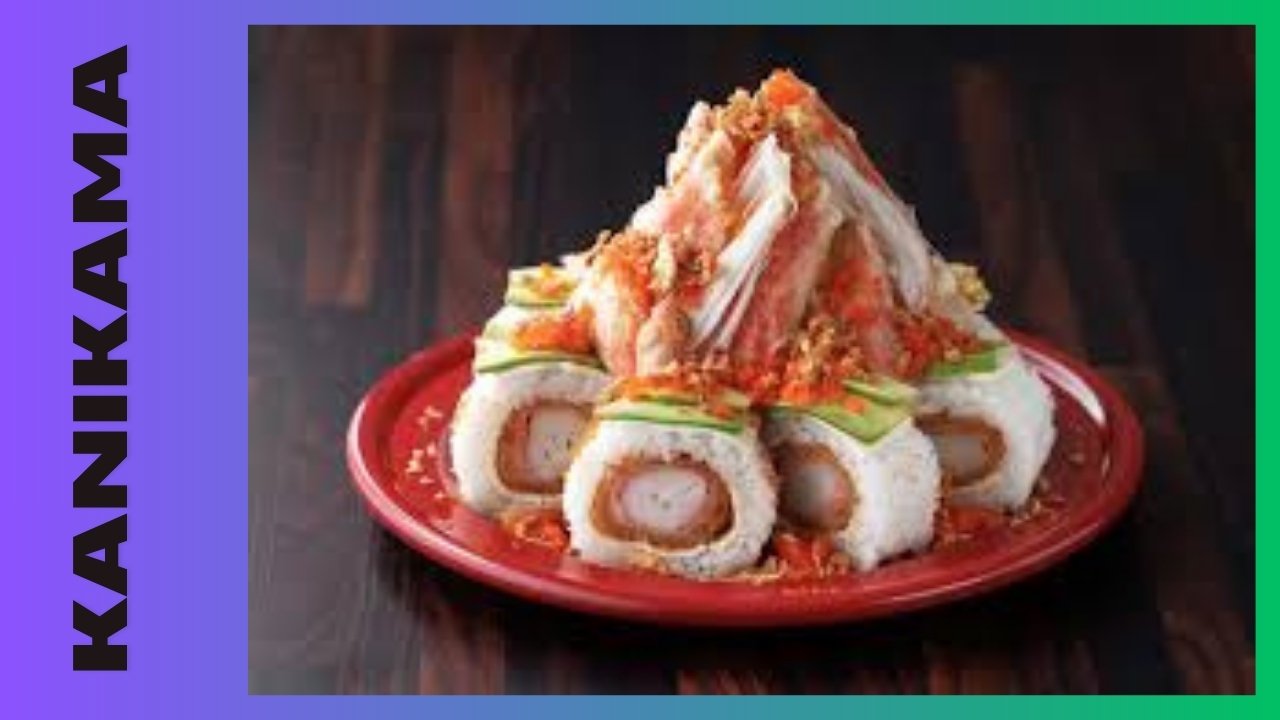When you think of Japanese cuisine, sushi and sashimi might be the first things that come to mind. However, there’s another culinary marvel that has quietly become a staple in the world of Japanese food kanikama, or imitation crab. While it might not enjoy the same level of fame as its more glamorous counterparts, kanikama holds a special place in many hearts and kitchens around the world.
What is Kanikama?
Kanikama, also known as imitation crab or surimi, is a type of processed seafood product designed to mimic the taste and texture of real crab meat. It originated in Japan in the early 1970s and rapidly gained popularity due to its affordability and versatility. Derived from finely pulverized white fish, typically Alaskan pollock, kanikama has made its way into everything from sushi rolls to salads.
The Cultural and Culinary Importance
For many Japanese families, kanikama is a pantry staple. Its presence in bento boxes, sushi bars, and izakayas (Japanese pubs) underscores its wide-ranging appeal. Kanikama’s adaptability allows it to fit seamlessly into various dishes, providing a cost-effective alternative to expensive crab meat while maintaining a similar flavor profile.
The Art of Imitation: How Kanikama is Made and Its Versatility in Dishes
One might wonder how a simple white fish can transform into something that closely resembles crab meat. The process behind making kanikama is a fascinating blend of culinary science and artistry.
The Making of Kanikama
The creation of kanikama starts with white fish, typically Alaskan pollock, which is deboned and ground into a paste known as surimi. The surimi is mixed with various ingredients, including starch, egg whites, vegetable oil, and crab flavoring, to create a cohesive and flavorful product. The mixture is then shaped into sticks or flakes and colored with a thin layer of red dye to mimic the appearance of real crab meat.
What sets kanikama apart is its texture—a delicate, stringy consistency that closely mirrors that of crab. This is achieved through a meticulous process of heating and cooling, which helps to align the proteins in the surimi, providing that characteristic flaky texture.
Versatility in Japanese Cuisine
Kanikama’s versatility knows no bounds. Here are a few ways it is commonly used:
Sushi Rolls: Kanikama is a primary ingredient in popular sushi rolls like the California roll, which pairs it with cucumber, avocado, and seasoned rice.
Salads: It’s often shredded and tossed into salads, providing a light, seafood flavor without the high cost of real crab.
Hot Dishes: From tempura to hot pots (nabe), kanikama lends its unique texture and flavor to a variety of cooked dishes.
Snacking: In Japan, kanikama is even enjoyed as a quick snack, sometimes grilled or simply eaten straight out of the package.
The Health Perspective: Nutritional Benefits and Considerations
While kanikama is known for its culinary versatility, it’s also worth examining from a nutritional standpoint. Understanding its health benefits and considerations can help you make informed choices about incorporating it into your diet.
Nutritional Benefits
Low in Calories: One of the most significant advantages of kanikama is its low caloric content. This makes it an excellent option for those looking to maintain or lose weight without sacrificing flavor.
High in Protein: Kanikama is a good source of protein, which is essential for muscle maintenance and overall health. A typical serving provides a considerable amount of protein relative to its calorie count.
Low in Fat: Unlike real crab meat, kanikama is low in fat, particularly saturated fat. This makes it a heart-healthy alternative to higher-fat seafood options.
Fortified with Nutrients: Many commercial kanikama products are fortified with vitamins and minerals, such as vitamin B12 and omega-3 fatty acids, which contribute to overall well-being.
Considerations
However, it’s essential to consider some nutritional drawbacks:
Sodium Content: Kanikama can be high in sodium, which is used both for flavor and as a preservative. Those watching their sodium intake should consume it in moderation.
Additives and Preservatives: The processing involved in making kanikama means it may contain various additives and preservatives. It’s advisable to check the ingredient list if you have any sensitivities or dietary restrictions.
Lower Omega-3 Content: While some kanikama products are fortified with omega-3s, they generally contain lower levels of these beneficial fatty acids compared to fresh fish.
Kanikama Beyond Sushi: Creative Recipes for Home Cooks
While kanikama is a star in sushi rolls, its potential extends far beyond the sushi bar. Here are some creative recipes that showcase the versatility of this unique ingredient.
Kanikama and Avocado Salad
Ingredients:
200g kanikama, shredded
1 ripe avocado, diced
1 cucumber, sliced
1/4 red onion, thinly sliced
2 tbsp soy sauce
1 tbsp rice vinegar
1 tbsp sesame oil
1 tsp sesame seeds
Salt and pepper to taste
Instructions:
In a large bowl, combine shredded kanikama, diced avocado, cucumber slices, and red onion.
In a small bowl, whisk together soy sauce, rice vinegar, sesame oil, salt, and pepper.
Pour the dressing over the salad and toss gently to combine.
Sprinkle with sesame seeds before serving.
Kanikama Tempura
Ingredients:
200g kanikama, cut into bite-sized pieces
1 cup tempura batter mix
1 cup cold water
Oil for frying
Dipping sauce (such as tentsuyu or soy sauce)
Instructions:
Heat oil in a deep fryer or large saucepan to 350°F (175°C).
In a bowl, mix the tempura batter mix with cold water until just combined. It’s okay if the batter is slightly lumpy.
Dip kanikama pieces into the batter, allowing any excess to drip off.
Fry the kanikama in batches until golden brown and crispy, about 2-3 minutes per batch.
Drain on paper towels and serve hot with dipping sauce.
Kanikama Onigirazu (Rice Sandwiches)
Ingredients:
4 sheets of nori (seaweed)
2 cups cooked sushi rice
200g kanikama, shredded
1/4 cup mayonnaise
1/2 cucumber, julienned
1 avocado, sliced
Soy sauce for dipping
Instructions:
Mix shredded kanikama with mayonnaise in a small bowl.
Place a sheet of nori on a clean surface, shiny side down. Spread a thin layer of sushi rice in the center.
Add a layer of the kanikama mixture, followed by cucumber and avocado slices.
Top with another thin layer of sushi rice.
Fold the nori over the filling to form a square parcel. Use a bit of water to seal the edges if needed.
Wrap tightly in plastic wrap and let sit for a few minutes to soften.
Unwrap and cut in half. Serve with soy sauce.
The Future of Kanikama: Sustainability and Innovations in Production
As the global demand for seafood continues to rise, sustainability has become a critical concern. Kanikama, with its reliance on abundant fish species like Alaskan pollock, presents an intriguing case for sustainable seafood production.
Sustainability in Kanikama Production
Resource Efficiency: Producing kanikama is highly resource-efficient. It utilizes fish species that are not only abundant but are also typically by-products of other fisheries. This reduces waste and makes more efficient use of marine resources.
Reduced Overfishing: By providing an alternative to real crab meat, kanikama helps alleviate the pressure on crab populations, which are often subject to overfishing. This contributes to healthier marine ecosystems.
Eco-Friendly Practices: Many kanikama producers are adopting more sustainable practices, such as eco-friendly packaging and sourcing fish from certified sustainable fisheries.
Innovations in Kanikama
Innovation is at the heart of kanikama’s enduring appeal. Modern advancements are enhancing the quality, flavor, and sustainability of this beloved ingredient.
Enhanced Flavor Profiles: Through the use of advanced flavoring techniques, manufacturers are continually improving the taste of kanikama, bringing it even closer to the flavor of real crab.
Plant-Based Alternatives: With the rise of plant-based diets, companies are exploring plant-based versions of kanikama, using ingredients like seaweed and legumes to create a similar taste and texture.
Nutritional Enhancements: New formulations are being developed to boost the nutritional profile of kanikama, including higher levels of omega-3 fatty acids and other essential nutrients.
You May Also Like: Buší: Unveiling the Rich Tapestry of a Word
Conclusion:
Kanikama, the humble imitation crab, has carved out a unique niche in the world of Japanese cuisine and beyond. Its origins, rooted in necessity and innovation, have blossomed into a culinary phenomenon that continues to captivate food enthusiasts, home cooks, and chefs alike.
From its versatile applications in sushi and salads to its potential in creative home-cooked dishes, kanikama offers a world of possibilities. Its nutritional benefits, coupled with efforts to enhance sustainability and innovation, ensure that kanikama will remain a cherished ingredient for years to come.
As you explore the art of kanikama in your own kitchen, remember that this beloved ingredient is more than just an imitation—it’s a testament to the creativity and ingenuity that define Japanese cuisine. So, whether you’re rolling sushi, tossing a salad, or frying up some tempura, let kanikama inspire your culinary adventures and bring a touch of Japanese tradition to your table.
Frequently Asked Questions
What is kanikama made from?
Kanikama, commonly known as imitation crab, is primarily made from white fish such as Alaskan pollock. This fish is processed into a paste known as surimi, which is then flavored, shaped, and cooked to resemble crab meat.
Is kanikama a healthy food option?
Yes, kanikama can be a healthy food option. It is low in calories and fat while providing a good source of protein. Some modern formulations also enhance its nutritional benefits by adding omega-3 fatty acids and other essential nutrients. However, it is essential to check the ingredient list for added sugars and sodium, which can vary among brands.
How can I use kanikama in cooking?
Kanikama is extremely versatile and can be used in various dishes beyond sushi. You can add it to salads, like a Kanikama and Avocado Salad, or incorporate it into tempura. It can also be used in onigirazu (rice sandwiches), pasta dishes, and crab cakes, to name a few.
How is kanikama contributing to sustainability?
Kanikama helps contribute to sustainability by using fish species that are abundant and often by-products of other fisheries, thereby reducing waste. Its production also alleviates pressure on crab populations by providing an alternative to real crab meat. Additionally, many producers are adopting eco-friendly practices and sourcing fish from certified sustainable fisheries.
Are there plant-based alternatives to kanikama?
Yes, there are plant-based alternatives to kanikama. With the rise of plant-based diets, companies are exploring options using ingredients such as seaweed and legumes to create a similar taste and texture to traditional kanikama, allowing even those who do not consume seafood to enjoy its flavor.









